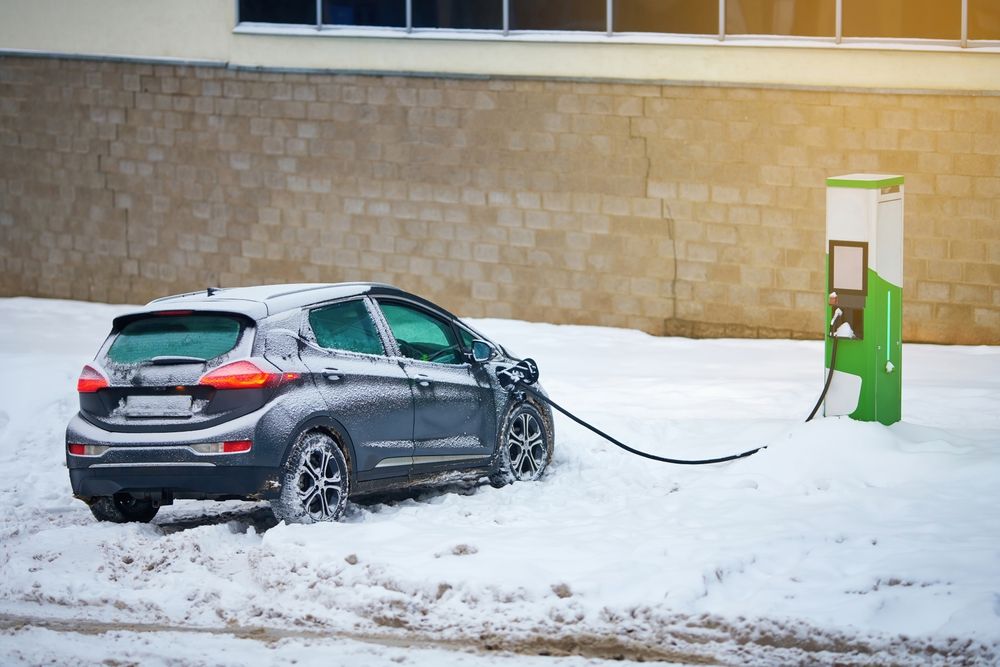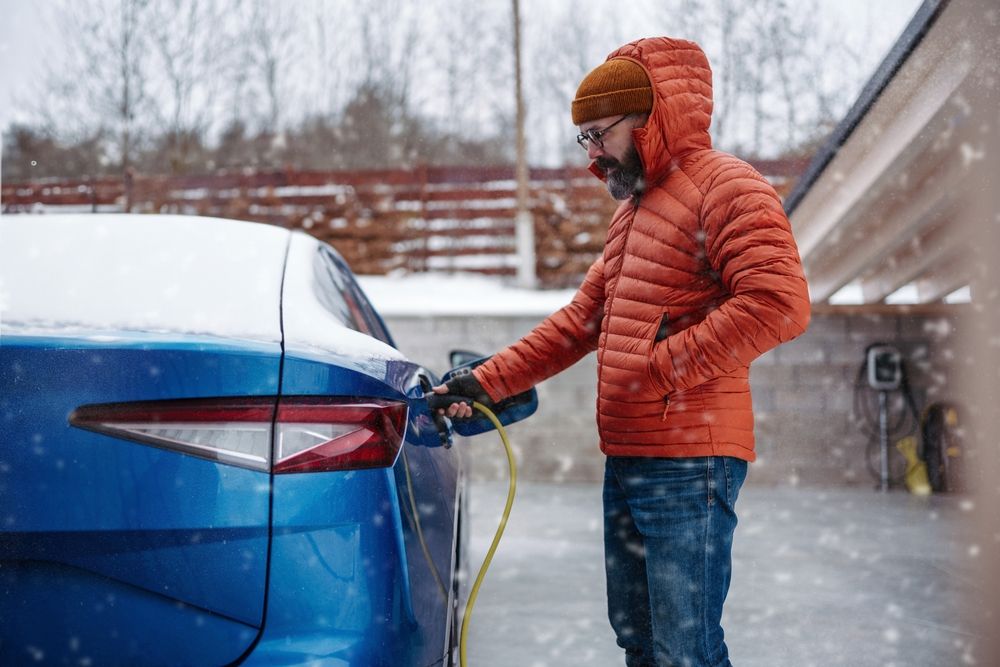Electric vehicles (EVs) have rapidly become a popular choice for environmentally-conscious drivers, offering an eco-friendly alternative to traditional gasoline-powered cars. However, like all vehicles, EVs face challenges when the weather turns cold. Cold temperatures can have a significant impact on the performance, range, and efficiency of electric vehicles. From reduced battery capacity to longer charging times, winter can present a few hurdles for EV owners.
But don’t worry—just like regular cars, EVs can be prepared for the cold, and there are several ways to mitigate the effects of chilly weather on your electric car. In this article, we’ll explore how cold weather affects EV performance and offer practical tips to help you get the most out of your vehicle during the winter months.
How Cold Weather Affects EV Batteries
At the heart of every electric vehicle is its battery, and unfortunately, cold temperatures can be particularly hard on lithium-ion batteries, which power most modern EVs. Here’s what happens when the temperature drops:
Reduced Battery Efficiency
Cold temperatures reduce the efficiency of lithium-ion batteries, which leads to a decrease in range. In freezing temperatures, the chemical reactions within the battery slow down, making it harder for the battery to provide energy to the motor. This means your EV may not travel as far on a single charge when it’s cold outside, which can be a concern, especially if you’re relying on your vehicle for longer trips.
Slower Charging Times
Cold weather can also affect the rate at which your EV charges. During the winter months, your car’s battery may take longer to charge because the lower temperatures make it harder for the battery to accept the current. Some EVs even include a feature that preheats the battery while plugged in, but in extreme cold conditions, this may still result in longer charging times.
Battery Range Reduction
On average, EVs can lose anywhere from 20% to 40% of their range in cold temperatures, depending on the severity of the cold and the type of battery used. This can be a concern if you rely heavily on your EV for commuting or road trips. For example, if your EV typically offers a range of 250 miles, you may see that drop to 150-200 miles when it’s freezing outside.
How Cold Weather Affects Other EV Systems
In addition to impacting the battery, cold weather can also affect other systems in your EV, including the heater, tires, and cabin systems. Let’s take a look at these:
Energy-Consuming Heating Systems
When temperatures dip, your EV’s cabin heating system will be working overtime to keep you warm. Electric vehicles typically use electric heating elements or heat pumps, both of which consume a significant amount of energy. The more you use your heater, the more energy it draws from your battery, which further reduces your driving range.
The defroster and rear-window heaters can also draw extra power, contributing to the overall decrease in efficiency. If you're used to just turning on the heat without worrying about range in a gas-powered car, you may need to adjust your driving habits in the winter months to manage this energy consumption.
Tire Performance
Cold temperatures affect tire pressure, and improperly inflated tires can lower your EV's efficiency. When the air cools, the air inside the tires contracts, which can lead to reduced tire pressure. Low tire pressure increases rolling resistance, making it harder for the car to move efficiently and using up more energy.
Regenerative Braking Efficiency
Regenerative braking, which helps recharge the battery by converting kinetic energy into electrical energy, may not be as effective in very cold conditions. Cold temperatures can reduce the effectiveness of this system, meaning that your vehicle won’t recover as much energy when braking, further decreasing efficiency.

What to Do About It: Tips for Maintaining EV Performance in Cold Weather
While cold weather can affect your EV’s performance, there are several ways you can mitigate these effects and ensure that your vehicle continues to perform well throughout the winter. Here are some practical tips to help you get the most out of your electric vehicle when the temperature drops:
1. Precondition Your EV
Many EVs come with a preconditioning feature that warms the cabin and battery while your car is still plugged in. This ensures that your battery is at an optimal temperature when you start driving, reducing the strain on the battery and helping to preserve your range. If your EV has this feature, be sure to use it, especially on cold mornings.
Preconditioning not only helps the battery but also ensures that your cabin is already warm, reducing the need to use the heater as soon as you start driving.
2. Use Seat Warmers Instead of the Heater
Instead of turning on the full cabin heater, consider using the seat warmers and steering wheel heaters (if your car has them). These features use less energy than the cabin heater and will help keep you warm while consuming less power from the battery. By reducing your reliance on the heater, you can preserve more of your range.
3. Monitor Tire Pressure Regularly
Cold weather can cause tire pressure to drop, which can negatively impact your EV’s efficiency. Be sure to check your tire pressure regularly and inflate your tires to the manufacturer-recommended level. This can help ensure that your vehicle is operating at maximum efficiency, especially during the winter months.
Many EVs have tire pressure monitoring systems (TPMS) that alert you when tire pressure is low. However, it’s still a good idea to check manually on occasion, particularly when there’s a noticeable temperature drop.
4. Plan for Longer Charging Times
During the winter months, you may experience longer charging times. Plan for extra time when charging your EV, especially if you’re using public chargers. If possible, try to charge your vehicle overnight at home when temperatures are more stable. If you need to charge in cold weather, try to find chargers that are well-sheltered or out of the wind, as extreme cold can further slow down charging speeds.
5. Drive Smoothly and Avoid Rapid Acceleration
To preserve your battery’s energy, try to drive more smoothly in cold weather. Avoid rapid acceleration and sudden stops, as these behaviors use more energy and can deplete your battery faster. Regenerative braking can help recover some energy, but driving smoothly will also contribute to maximizing your range.
6. Store Your EV in a Garage (If Possible)
If you have access to a garage or covered parking, storing your EV in a warmer location can help protect it from the extreme cold. Parking indoors can prevent the battery from being exposed to frigid temperatures, which can negatively impact its performance. This also helps maintain more consistent tire pressure and can reduce the time needed to precondition the battery.
7. Monitor Battery Health
Cold weather can accelerate wear on your EV’s battery over time, so it's a good idea to monitor its health regularly. Some EVs provide a battery health report through their app, which can give you insights into how the battery is performing. If your car seems to be losing charge more quickly than usual, or if it’s taking longer to charge, it may be a sign that the battery is struggling with the cold.
Embrace the Cold with Proper Preparation
While cold weather does present certain challenges for EV owners, with the right preparation and adjustments, you can minimize its impact on your vehicle's performance. From preconditioning your car to monitoring tire pressure and using energy-efficient features like seat warmers, there are plenty of steps you can take to ensure that your EV continues to perform well throughout the winter.
As EV technology continues to evolve, manufacturers are working on making these vehicles even more resilient to cold temperatures, ensuring that range, efficiency, and performance continue to improve. So, if you live in an area that experiences harsh winters, don't let the cold weather scare you away from driving an electric vehicle. With a little extra care, your EV will continue to serve you well, no matter the season.





